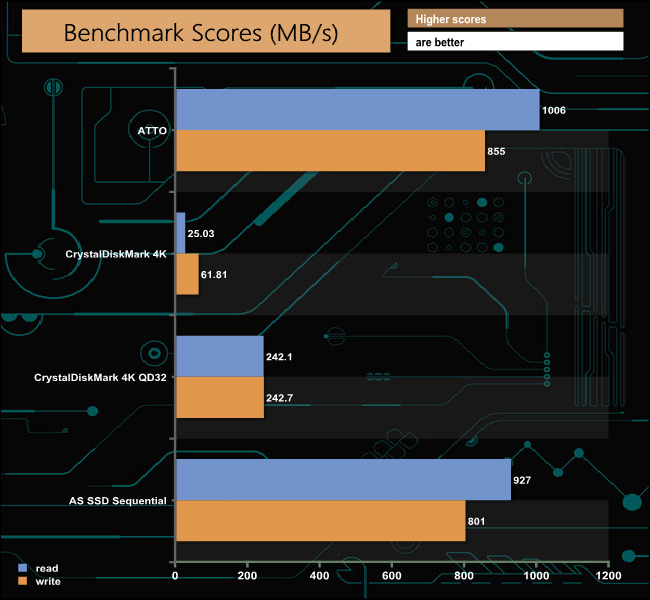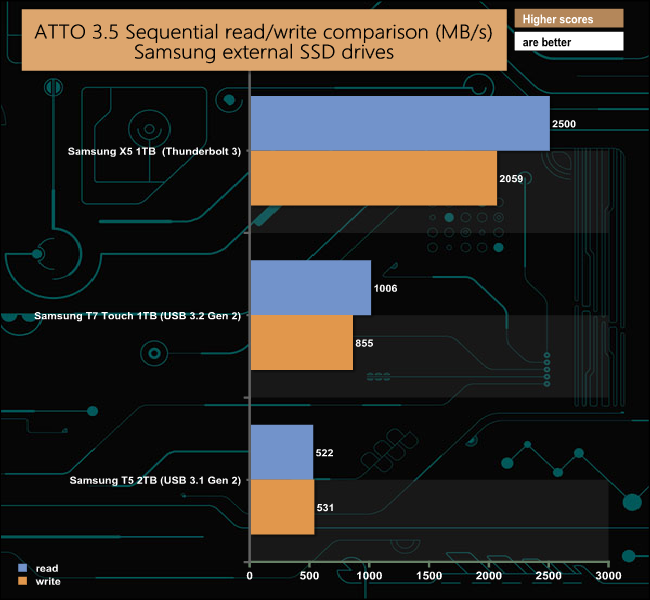Out of the box, the drive came formatted in ExFat, but to use our benchmarks to test the drive we reformatted it to NTFS.
Main system:
AMD Ryzen 5 3600X, 16GB DDR4, Sapphire R9 390 Nitro and an MSI Meg X570 Ace motherboard.
Software:
Atto Disk Benchmark.
CrystalMark 3.0.3.
AS SSD.
IOMeter.
Crystalmark is a useful benchmark to measure theoretical performance levels of hard drives and SSD’s. We are using V3.0.3.
The ATTO Disk Benchmark performance measurement tool is compatible with Microsoft Windows. Measure your storage systems performance with various transfer sizes and test lengths for reads and writes. Several options are available to customize your performance measurement including queue depth, overlapped I/O and even a comparison mode with the option to run continuously.
Use ATTO Disk Benchmark to test any manufacturers RAID controllers, storage controllers, host adapters, hard drives and SSD drives and notice that ATTO products will consistently provide the highest level of performance to your storage.
AS SSD is a great free tool designed just for benching Solid State Drives. It performs an array of sequential read and write tests, as well as random read and write tests with sequential access times over a portion of the drive. AS SSD includes a sub suite of benchmarks with various file pattern algorithms but this is difficult in trying to judge accurate performance figures.
The official Sequential speed ratings for the T7 Touch are up to 1,050MB/s for reads and up to 1,000MB/s for writes. Using the ATTO benchmark we fell short of both maximums but with reads of 1,006MB/s and 855MB/s for reads and writes respectively, it's still a very quick external drive.
The new T7 Touch sits between the previous generation, SATA based T5 using a USB 3.1 Gen 2 connection and the X5 external drive which uses an NVMe drive but with a Thunderbolt 3 interface.
 KitGuru KitGuru.net – Tech News | Hardware News | Hardware Reviews | IOS | Mobile | Gaming | Graphics Cards
KitGuru KitGuru.net – Tech News | Hardware News | Hardware Reviews | IOS | Mobile | Gaming | Graphics Cards




